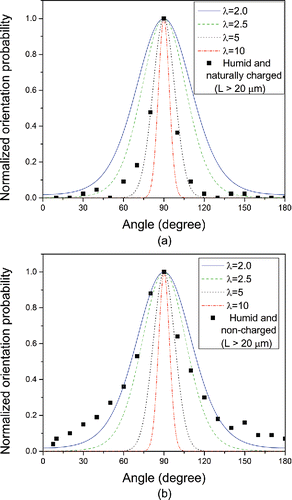Figures & data
Figure 1. Experimental setup for measurement of fiber alignment (top); Test unit for fiber alignment (bottom).
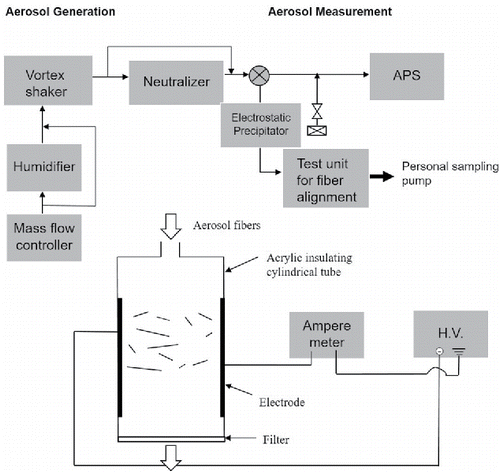
Figure 2. Configuration of a test section for fiber alignment and schematic diagram of cross sections of two types of electrodes. (a) cylindrical electrodes (b) planar electrodes. The arrows mean starting positions and directions which images of fibers on a filter are scanned toward. Alignment angle (θ) of a fiber was measured relatively to the vertical line, as shown in the top view (b). Perfect alignment of a fiber to the electric field (E) is corresponding to 90 degree.
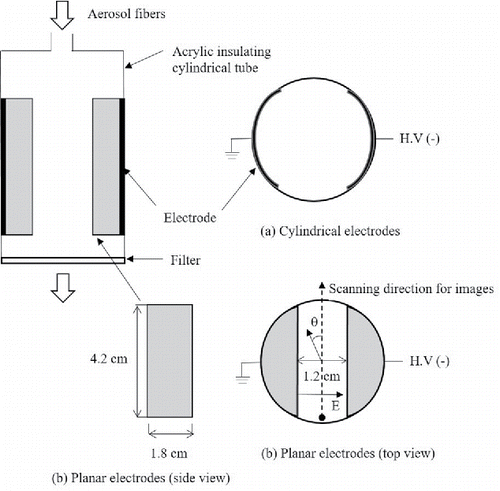
Figure 3. Optical images for fibers collected on MCE filter right after two cylindrical electrodes applied at 8.1 kV of a DC voltage. Naturally charged fibers, dry air and aerosol flow rate 1.5 lpm. Electric field direction is expressed as an arrow on the top left corner of the top image.
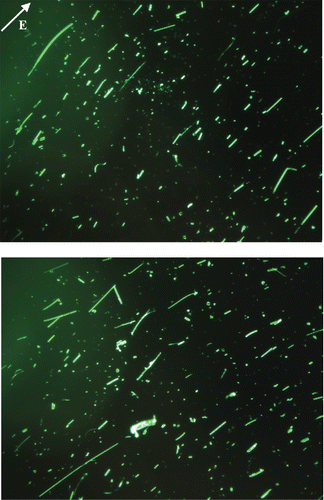
Figure 4. Typical optical image for fibers. Dry air and naturally charged, no electric field in parallel plate electrodes.
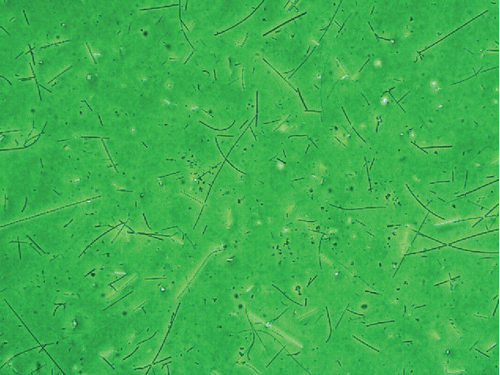
Figure 5. Typical optical images for fibers. Dry air and naturally charged, 7.3 kV on parallel plate electrodes. Bright field image (top) and dark field image (bottom) for the same field of view. Electric field direction is expressed as an arrow on the top left corner of the image.
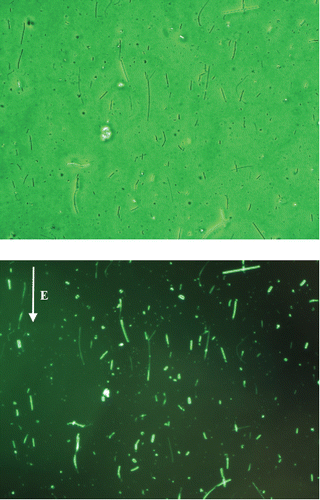
Figure 6. Angular distributions of fibers in dry condition. (a) No electric field, (b) with electric field for all length fibers, (c) with electric field for lengths smaller than 20 µm, and (d) with electric field for lengths larger than 20 µm. Nt is the total number of fibers counted and N is the number of fibers in each angle bin.
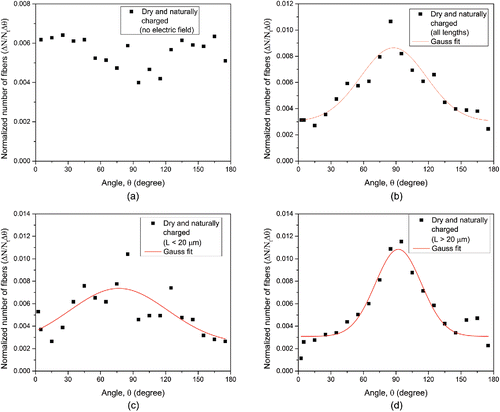
Figure 7. Angular distributions of naturally charged fibers in humid condition. (a) All lengths included, (b) lengths smaller than 20 µm, and (c) lengths larger than 20 µm. Nt is the total number of fibers counted and N is the number of fibers in each angle bin.
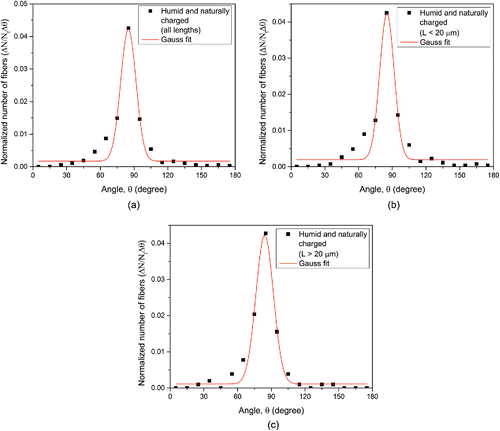
Table 1. Mean angle, standard deviation, and background particles for angular distributions fitted with Gaussian distributions for different fiber conditions.

